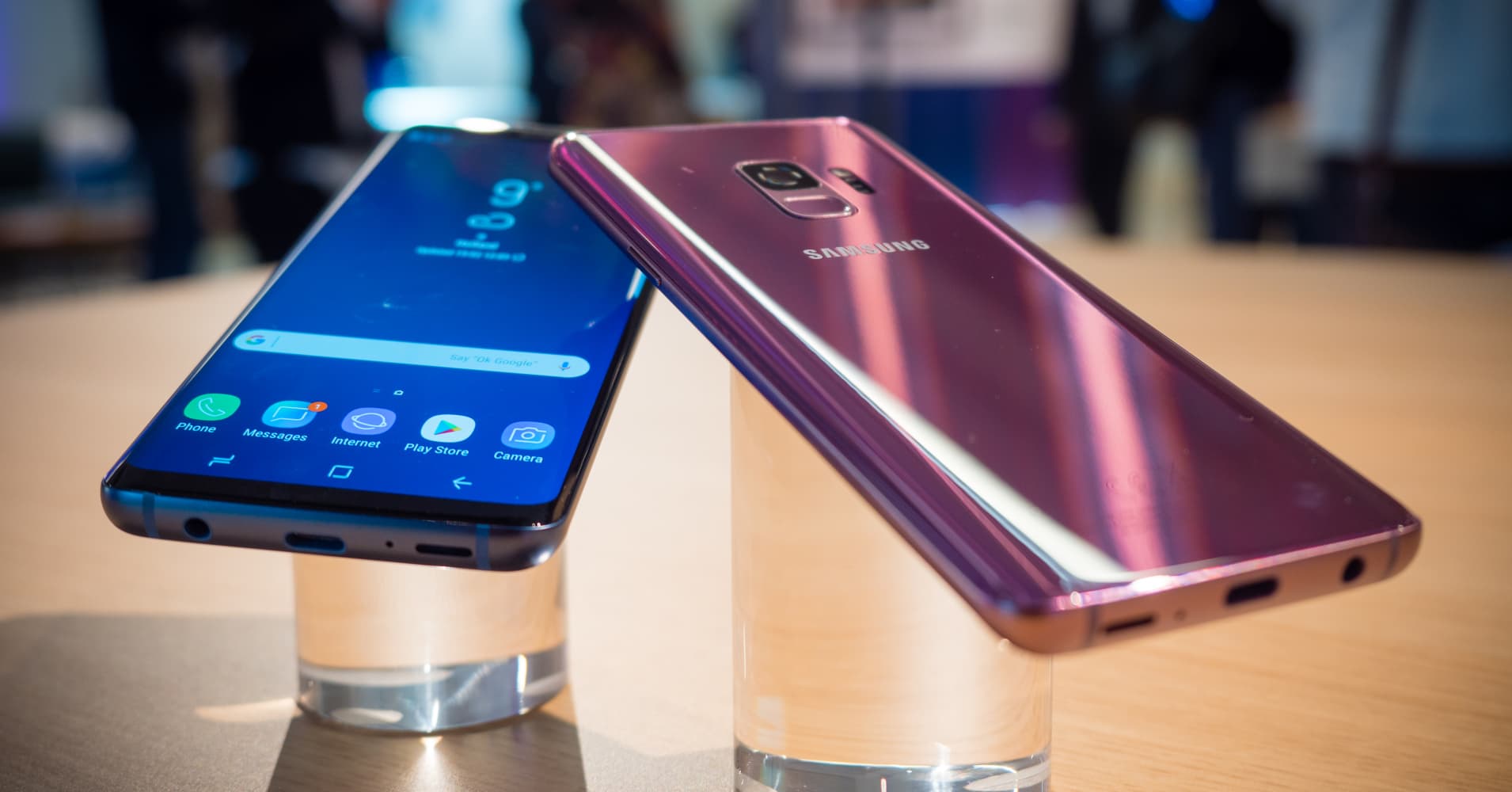Samsung is facing one of its toughest years as smartphone sales slow. But these could be the bright spots

Samsung's flagship Galaxy S9 and S9+ smartphones hit the shelves on Friday, but the South Korean electronics giant could face one of its toughest years in recent times.
In 2017, Samsung's mobile division managed to grow despite a sluggish market, thanks to the Galaxy S8, which was very different to its predecessors. It had favorable semiconductor market dynamics of supply shortage and high demand that pushed prices harder, helping the company surpass Intel as the world's biggest chipmaker.
And on top of that, Apple was buying so-called OLED panels from Samsung for the iPhone X, which helped boost profits in that division. Samsung's share price rose over 41 percent in 2017 as a result.
The problem is that those trends that helped Samsung last year might not be present in 2018. Investors are clearly cautious; shares of Samsung Electronics are flat this year.
Firstly, research firm Gartner showed that smartphones sales fell 5.6 percent in the fourth quarter of 2017, the industry's first decline since 2004. People are holding on to phones for longer and with prices steadily climbing towards, and at times exceeding, the $1,000 mark, consumers don't feel the need to splurge on the latest smartphone.
Competition in the handset market might be fiercer than ever. Not only is Samsung facing Apple, but it's got a serious rival in the form of China's Huawei, and even from alternative Chinese brands Oppo, Vivo and Xiaomi. These smartphone makers are offering high-spec devices with substantially lower prices than bigger rivals. In India, key smartphone market Xiaomi knocked Samsung off the top spot in the fourth quarter.
Secondly, the semiconductor market, which saw revenues grow by 22.2 percent last year, will see a much slower rate of growth in 2018. Given that semiconductors made up the bulk of Samsung's profits last year, this could be a problem.
And finally, Apple could be trying to reduce its reliance on Samsung's display technology by sourcing some screens from another South Korean firm, LG.
All these factors together make it seem likely that a rocky road lies ahead for Samsung. But there may be some bright spots to be exploited, depending on how the company manages it.
One of the most important announcements Samsung made during its big S9 reveal in February was a new trade-in program. With a $839.99 price tag, the S9+ is one of the most expensive smartphones on the market. That could put people off.
But Samsung is allowing consumers to trade in an old phone to get money off the S9 and S9+. A Galaxy S8 and iPhone X will fetch $300. A Galaxy S7 will get you $200 off the new S9. So there's a decent discount even for a two-year old phone. That could push those users who are thinking about holding their S7 for another year to upgrade.
On top of this, the most common Samsung flagship models in use are the S7 and S7 Edge, both released in 2016 and which have a combined market share of 5.26 percent, according to IHS. The Galaxy S6 from 2015, and the four-year-old Galaxy S5 are the next most popular. While the S9 looks similar to the S8, it's different to these older Galaxy devices. And that could provide some pent up demand for Samsung.
Indeed, analysts at Counterpoint Research forecast Samsung could sell close to 43 million units of the S9 series in 2018, more than the 35 million S8 phones sold in 2017.
Conversely, users on these older phones might see the similarity between the S9 and S8, and opt for the latter, which has now become cheaper. That could weigh on Samsung's mobile profit and revenues. The South Korean technology giant will have to find a way to convince users that the S9 is radically different, and that's the challenge.
For Samsung, semiconductors are extremely important. Though the market may not grow as fast as last year, it will still hit $451 billion, 7.5 percent higher than last year, according to Gartner.
And Counterpoint Research said that both DRAM and NAND flash memory, the type of chips Samsung specializes in, are seeing price increases. This should be bullish for Samsung, although the researchers noted that the semiconductor revenues in the first quarter may actually see a decline. How Samsung navigates this will be key.
Expectations for Samsung are high after its stellar year. But the road to success for the tech titan this year will be tougher than in 2017.
For more insight from CNBC contributors, follow @CNBCopinion on Twitter.

Post a Comment